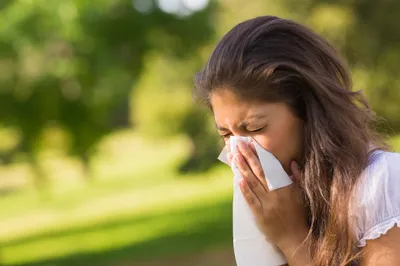Asthma is a common respiratory ailment in the U.S. An estimated 17.7 million people who have it according to statistics from the Centers for Disease Control and Prevention (CDC).
While it’s widespread, that doesn’t make it any easier to deal with for those afflicted. While there is no known cure there are certain triggers of asthma “attacks” that can be avoided, and in honor of Asthma Awareness Month, here are six of them…
1. Wipe Surfaces Clean at Home
Countertops and tabletops are a perfect place for dust and pet hair to gather, notes GetSmartAboutAsthma.com. Even walls and light switch plates can accumulate asthma triggers, even though they’re a vertical surface.
The site recommends using cleaning products that are made from natural ingredients, as to not aggravate respiratory problems. Using natural cleaners can also help ensure safety of food preparation surfaces; check the labels first before using any cleaner.
2. Put a Hold on Mold
Mold spores are a big trigger of asthma attacks and allergies, so ensuring mold is reduced or eliminated is key. Mold may be growing undetected and can be released into the air if it’s disturbed.
Mold is everywhere, but you can take steps to ensure indoor safety. One is to use a HEPA filter in your air conditioning that can trap mold spores, suggests the Asthma and Allergy Foundation of America (AAFA). Also pay attention to humid rooms such as bathrooms and the basement where mold loves to live.
3. Use Pillow and Mattress Covers
Dust mites are tiny little critters that can have a larger affect on your respiratory health, and they love to hang out in the bedroom. To help keep them in their place while you’re sleeping, use appropriate pillow and mattress covers to “make a barrier between dust mites and yourself”, suggests the CDC.
The source also suggests avoiding using down-filled pillows and comforters, as well as to remove any stuffed animals from sleeping areas, as they are essentially just dust collectors. The CDC also advises to use the hottest water setting when washing bedding.
4. Vet your Pets
You may have a couple of furry companions in your home that are inadvertently making it tough for you to breathe due to shedding. If you spend time in a space without animals and notice you can breathe easier, then your pets may be the culprits.
This can be a tough realization for pet lovers, but if you’ve identified them as an asthma or allergy trigger then it may be time to start searching for a good home for them. If you don’t want to go to those lengths, don’t let pets in the asthma sufferer’s bedroom and vacuum often, suggests the CDC.
5. Avoid Cigarette Smoke in the Home
It’s becoming increasingly known that cigarette smoke is a harmful agent, and it can be especially dangerous for those with respiratory ailments. It’s not only smokers who should pay attention to their asthma triggers; second-hand smoke is a big concern for non-smokers with asthma.
In fact, WebMD notes, “inhaling secondhand smoke, also called ‘passive smoke’ or ‘environmental tobacco smoke,’ may be even more harmful than actually smoking.” This is because harmful by-products from burning a tobacco product (i.e., tar and carbon monoxide) are produced from the end of the cigarette or cigar (rather than the tip) according to the source.
6. Check Pollution Indexes
While it’s easier to have influence over indoor conditions than outdoor, there are still things to keep in mind when you’re out and about. Air pollutants such as pollen can set off asthma (pollens are the worst in spring and fall), as well as pollution from manufacturing and vehicles.
Pollen is apparently at its worst between 5 a.m. and 10 a.m. and again at dusk, according to WebMD. You can also look up the Air Quality Index (AQI) in your city to see if conditions are favorable for a stroll. For example, here’s an AQI for the Chicago area.









